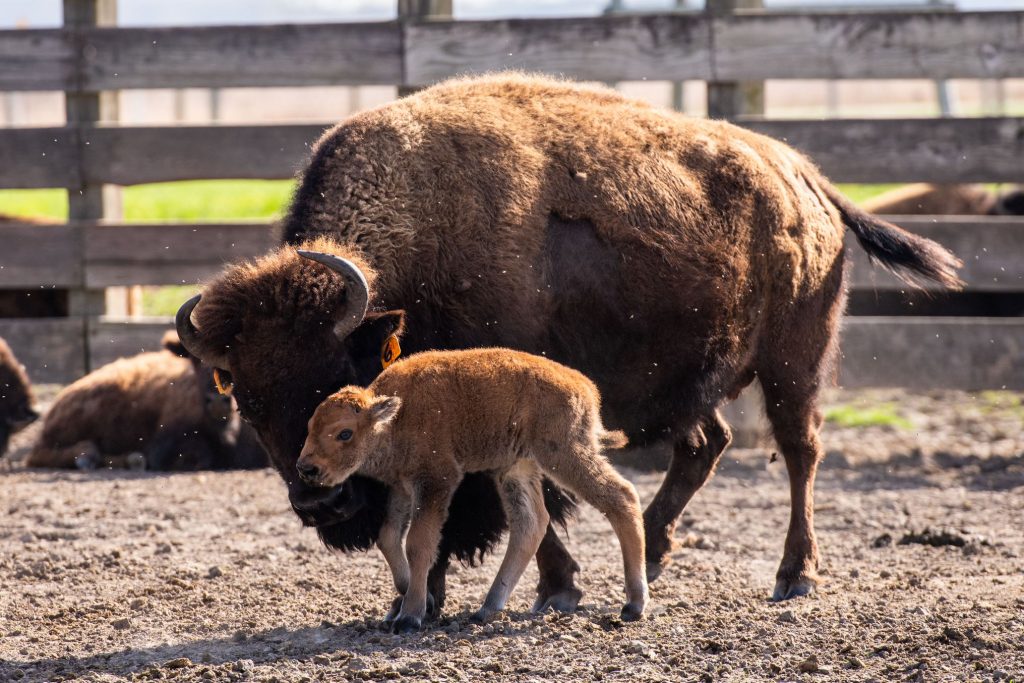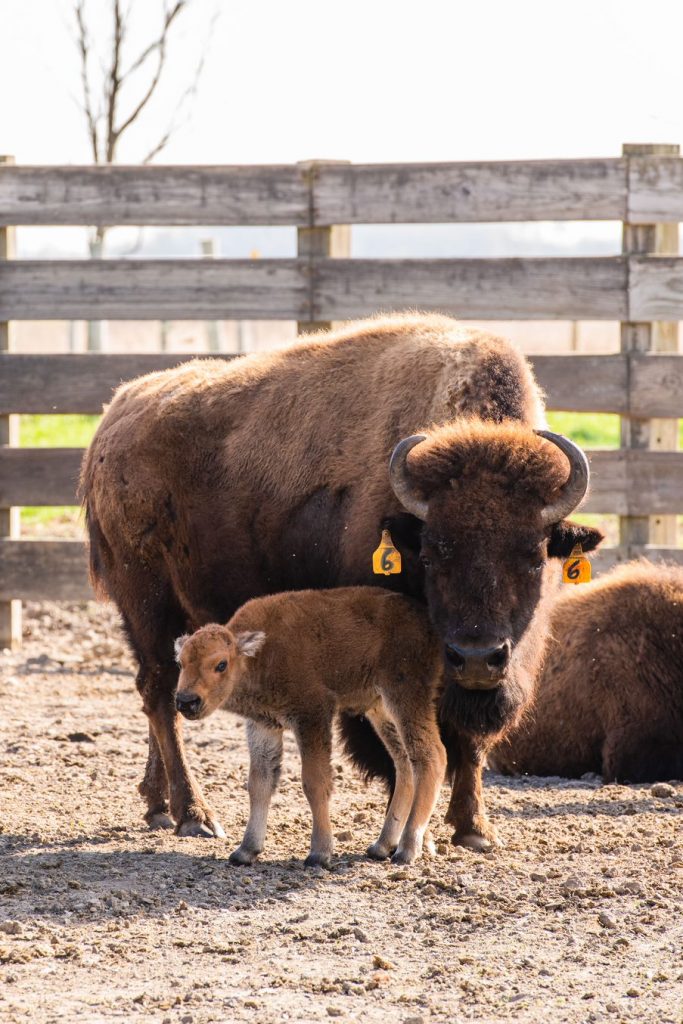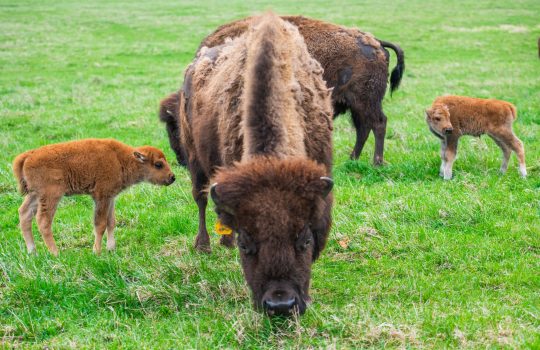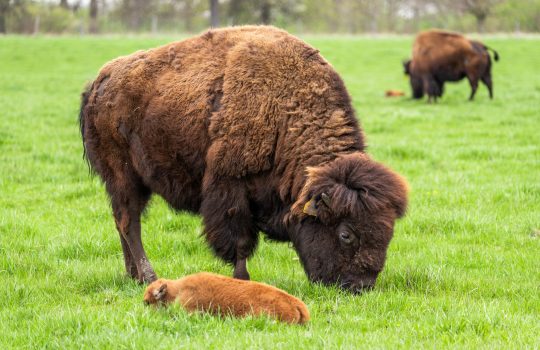Minutes away from Fermilab’s particle accelerators, the lab’s iconic bison herd welcomes its newest (and most adorable) member. The first calf this spring was born on April 13; mom and baby both are doing well.
The newest calf brings the herd to 40 animals, joining 24 cows, two bulls and 13 yearlings. “This year we have more than usual because we kept more calves from last year,” said Cleo Garcia, Fermilab’s bison herdsman. Normally, calves are sold in the fall after they’ve been weaned, but last year, 11 were not purchased, and two calves arrived so late in the season that they were still nursing.

Fermilab’s first calf was born April 13, marking the start of the new calf season this spring. Photo: Ryan Postel, Fermilab
Bison have been living on the natural areas of Fermilab since 1969 when the lab’s first director, Robert Wilson, established the herd to connect the lab with the Midwestern prairie on which it’s built. The herd started with a single bull, two cows and three yearlings — all introduced with lively personas — and another 12 animals were donated by the Illinois Department of Conservation in 1971 to help diversify the stock.
Most of the Fermilab bison today are descendants of this original herd. “All the cows were born here at Fermilab,” Garcia said, “the only thing we change is the bulls every five to six years.” Rotating the bulls keeps the herd healthy and genetically diverse. In fact, genetic testing in 2015 revealed that the Fermilab herd is 100% bison, free of cattle genes, and shares lineages with wild herds in six other states.
“We hope to have at least 22 calves this year,” said Garcia. Determining exactly how many calves to expect annually is an imprecise science because the grounds team lets everything happen naturally. Rather than testing the cows to see if they’re pregnant, the team must rely on physical signs like swollen udders and bellies for an estimate. “You can see when they’re about to give birth,” Garcia said, “Most of them tend to get away from the rest of the herd, and then they come back with a baby. It’s amazing.”

The newest member of Fermilab’s bison herd was born on an 80-degree Fahrenheit spring day, the same day the lab celebrated the opening of two new research buildings and the groundbreaking of the Linac Complex. Photo: Ryan Postel, Fermilab
Calving season is expected to continue through July, and perhaps a bit longer; the final calf of last year’s season was born in September. As more calves arrive, the grounds team will be on the lookout to ensure they are thriving. “We’re looking for signs that calves are nursing,” explained Garcia, “and that they are welcomed by the herd.” And sometimes, the team must chase coyotes from the pens. Although a single coyote doesn’t present a danger to the bison, Garcia said they don’t want to risk a whole pack taking an interest.
For those visiting the herd, Garcia suggested coming to Fermilab public areas multiple times throughout the season to see the color of the calves change from a light cinnamon to a dark brown. And of course, keeping an eye out for playful newborns. “They play sometimes,” Garcia said, “You see them running around and start jumping, especially after nursing.”
The Fermilab site has been designated a National Environmental Research Park by the U.S. Department of Energy. The lab’s environmental stewardship efforts are supported by the Department of Energy Office of Science as well as Fermilab Natural Areas.
Fermilab is supported by the Office of Science of the U.S. Department of Energy. The Office of Science is the single largest supporter of basic research in the physical sciences in the United States and is working to address some of the most pressing challenges of our time. For more information, visit Fermilab’s website and follow us on Twitter at @Fermilab.



